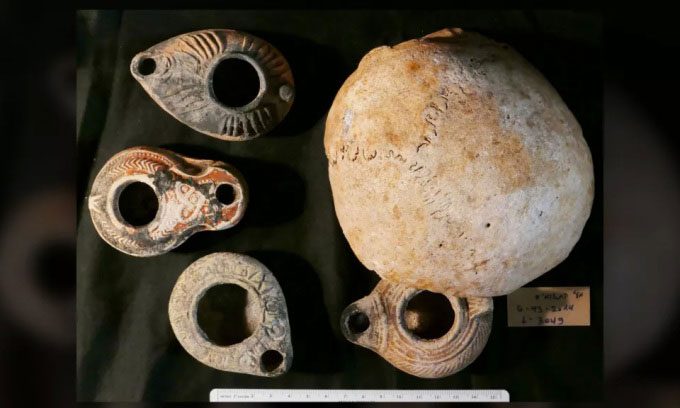Human skulls and other artifacts found in Te’omim Cave are believed to have been used for necromancy – communicating with the dead – during the Roman era.
Scientists have discovered three human skulls, 120 oil lamps, ancient axes, and spears hidden in the Te’omim Cave near Jerusalem, as reported by Live Science on July 17. This evidence suggests that during the Roman period, this site was used for necromantic practices (communicating with the deceased). The new research was published in the journal Harvard Theological Review. Based on the design of the artifacts, the research team believes that the rituals were performed in the cave during the 2nd to 4th centuries.

Researchers found numerous oil lamps and human skulls in Te’omim Cave near Jerusalem. (Photo: Boaz Zissu/Te’omim Cave Archaeological Project).
Most of the Jews living in the region were either killed or displaced by the Roman Empire following the Bar Kokhba revolt from 132 to 136, according to research author Boaz Zissu, an archaeologist at Bar-Ilan University, Israel. The Romans subsequently settled here with people from other parts of the empire, possibly from Syria, Anatolia, and Egypt. “They brought with them new concepts, new customs, and apparently necromantic practices,” Zissu stated.
Necromancy was considered wicked and often prohibited in the Roman Empire. However, many ancient cities were located near secret “prophetic” sites, where ancient people believed they could communicate with the dead. Te’omim Cave is one such place.
Oil lamps, human skulls, and weapon fragments were placed in cracks within the large cave, often so deep that the research team had to use long poles with hooks on the end to retrieve them. Zissu noted that the ancients may have also used sticks to place them there.
The deep cracks prevented the oil lamps from providing much light. Initially, the team of experts thought they were objects used for worshipping deities in the afterlife. However, the discovered skulls, also retrieved from the cracks, indicated that the true purpose of the rituals was to attempt to communicate with the dead – believed to have the ability to foretell the future. According to the research team, human bones were sometimes used to contact the individual after death, and flickering flames were interpreted as messages from the other side.
“This cave provides significant evidence of the diversity of religious practices during the Roman era, highlighting the stark contrast between caves used by Roman polytheists for religious purposes and the earliest Christian cave churches in the Holy Land,” said archaeologist Ken Dark from King’s College London.


















































